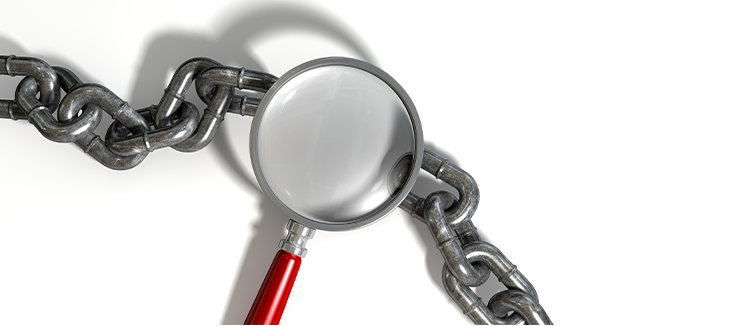In the realm of medical diagnostics and treatment, the use of ultrasound probes—such as transesophageal, transvaginal, transrectal, surface, and other semi-critical devices—has become increasingly prevalent. These instruments play a crucial role in various medical procedures by providing healthcare professionals with essential insights into patient conditions. However, ensuring the safety and efficacy of these devices hinges on meticulous cleaning and disinfection protocols. This article explores the question of whether a probe can achieve proper high-level disinfection (HLD) if it has not been cleaned correctly, highlighting the importance of thorough cleaning in the disinfection process, the implications of inadequate cleaning, and best practices for maintaining probe hygiene.
Understanding High-Level Disinfection
High-level disinfection is defined as a process that eliminates all microorganisms, except large numbers of bacterial spores. It is a critical step for semi-critical medical devices that come into contact with mucous membranes, such as transvaginal ultrasound probes. The Centers for Disease Control and Prevention (CDC) and the Association for the Advancement of Medical Instrumentation (AAMI) emphasize that achieving HLD requires not only the use of appropriate chemical agents but also the prior removal of organic and inorganic matter from the device.
The Cleaning Process: A Prerequisite for Disinfection
The cleaning process serves as the foundation for effective disinfection. It involves the physical removal of debris, blood, tissue, and other organic materials that can harbor pathogens and interfere with the efficacy of disinfectants. If a probe is not cleaned properly, residual contaminants can shield microorganisms from the action of chemical disinfectants, rendering the disinfection process ineffective.
For instance, a study from Antimicrobial Resistance & Infection Control1 has shown that bioburden—the term used to describe the number of microorganisms present on a surface—can significantly impact the efficacy of disinfectants. Without adequate cleaning, even high-level disinfectants may fail to penetrate biofilms or organic matter, allowing pathogens to survive and potentially leading to healthcare-associated infections (HAIs).
Implications of Inadequate Cleaning on Disinfection Outcomes
The failure to clean an ultrasound probe properly before disinfection can have serious consequences. Inadequate cleaning can lead to the persistence of harmful microorganisms, thereby increasing the risk of infection for patients undergoing procedures involving these devices. For example, improper cleaning of endoscopes has been linked to outbreaks of infections caused by multidrug-resistant organisms2, highlighting the critical importance of adhering to established cleaning protocols.
Moreover, the implications extend beyond patient safety; they can also impact healthcare facilities' reputations and financial stability. Infection outbreaks resulting from inadequate disinfection can lead to increased liability, regulatory scrutiny, and diminished patient trust. Consequently, healthcare institutions must prioritize rigorous cleaning protocols to mitigate these risks.
Best Practices for Effective Cleaning and Disinfection
To ensure that ultrasound probes receive high-level disinfection, healthcare facilities must implement the best practices for cleaning and disinfection. First, staff must be thoroughly trained in cleaning protocols specific to each make and model of the ultrasound probe, emphasizing the importance of thoroughness and attention to detail. Regular competency assessments can help maintain high standards of practice.
Second, the use of validated cleaning agents and protocols is essential. Facilities should follow manufacturers' guidelines for cleaning and disinfecting specific devices, as these recommendations are based on research and best practices. Additionally, employing automated cleaning systems can enhance the consistency and effectiveness of the cleaning process.
Finally, establishing a robust quality assurance program can help monitor and evaluate cleaning and disinfection practices. This program should include regular audits, staff feedback, and updates to protocols based on emerging evidence and technological advancements.
In conclusion, the premise that an ultrasound probe can receive proper high-level disinfection if it has not been cleaned correctly is fundamentally flawed. The cleaning process is an indispensable prerequisite for effective disinfection, as residual contaminants can inhibit the action of disinfectants and pose significant risks to patient safety. To uphold the highest standards of care, healthcare facilities must prioritize thorough cleaning protocols, staff training, and adherence to best practices. By doing so, they can ensure that medical probes achieve the necessary level of disinfection, safeguarding patients and enhancing the overall quality of healthcare delivery. If you are looking to fully automate the cleaning and high-level disinfection of ultrasound probes then your next step is to contact CS Medical and learn more about Ethos automated cleaner disinfector that has been FDA-cleared for transvaginal, transrectal and surface ultrasound probes with various manufacturers approval.
1. Maillard, JY., Centeleghe, I. How biofilm changes our understanding of cleaning and disinfection. Antimicrob Resist Infect Control 12, 95 (2023). doi: 10.1186/s13756-023-01290-4
2. Kenters N, Huijskens EG, Meier C, Voss A. Infectious diseases linked to cross-contamination of flexible endoscopes. Endosc Int Open. 2015 Aug;3(4):E259-65. doi: 10.1055/s-0034-1392099. PMID: 26355428; PMCID: PMC4554517.


